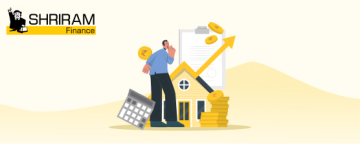Investing in the stock market presents numerous opportunities for growth, but the path you choose can significantly impact your returns. Two of the most common methods of trading are margin trading and cash trading. Understanding the differences between these two approaches is crucial for making informed investment decisions.
Using a margin vs. cash trading calculator can provide valuable insights, helping you optimise your strategies. This article explores the key differences between margin and cash trading and the benefits and risks associated with each of them.
What Is Margin Trading?
Margin trading lets you buy more stocks by borrowing money from your brokerage. When you engage in margin trading, you start by depositing a portion of the total investment as the initial margin. The brokerage then lends you the remaining amount needed to buy the securities. Essentially, you are leveraging your capital, which means your potential returns can be significantly higher. However, this also means that your potential losses can be equally magnified. The purchased shares typically serve as collateral for the borrowed funds.
What Is Cash Trading?
Cash trading is a more straightforward and conservative approach. In cash trading, you buy securities using only the funds you have in your account. There is no borrowing involved, and thus, you avoid the risks associated with margin calls and interest payments. Cash trading limits your potential losses to the amount of money you have invested, making it a safer option for risk-averse investors.
There is no risk of losing more than your initial investment, which provides peace of mind, especially in volatile markets. However, cash trading also limits your potential gains. Since you are not leveraging additional funds, your returns are directly proportional to your investment. This method is particularly suited for long-term investors who prioritise steady growth over quick gains.
Comparing Margin and Cash Trading
The decision to choose between margin and cash trading depends on your financial goals, risk tolerance, and market conditions. Here are the key differences between cash and margin trading:
- Leverage: Margin trading allows you to buy more securities than you can afford with your own funds by borrowing money. Cash trading does not involve borrowing; you only purchase securities with the cash you have.
- Risk: Margin trading involves higher risk because it magnifies both gains and losses. Cash trading is less risky since you are only exposed to the amount you invest.
- Interest Costs: Margin trading includes interest payments on the borrowed amount, which can reduce your net profits. Cash trading does not have any borrowing costs, making it more cost-effective.
- Ownership: In margin trading, the securities are partially owned by the broker until the loan is repaid. In cash trading, you fully own the securities from the time of purchase.
- Market Impact: In volatile markets, margin trading can be particularly risky due to the potential for significant losses and margin calls. Cash trading provides more stability during market fluctuations.
Understanding the Margin vs. Cash Trading Calculator
The margin vs. cash trading calculator helps you evaluate the potential outcomes of both trading methods. You can input various parameters, such as your available cash, the amount of leverage you are considering, expected return rates, and interest costs. The calculator can show you the possible profit or loss in both scenarios, taking into account factors such as interest payments and the risk of a margin call.
This comparative analysis is beneficial, especially when you are faced with the decision of whether to leverage your investments or play it safe. By clearly displaying the potential risks and rewards, the calculator allows you to make a more informed choice that is in line with your financial goals.
Margin vs. Cash Trading: Making the Right Choice
Here are the factors to consider when choosing between margin and cash trading:
- Assess Your Risk Tolerance: Margin trading can offer higher returns, but it comes with significant risks. If you are uncomfortable with the possibility of losing more than your initial investment, you might prefer the safety of cash trading.
- Evaluate Your Financial Goals: If your goal is to build wealth steadily over the long term, cash trading might be the better option. However, if you are seeking higher short-term gains and are willing to accept greater risks, margin trading could be more suitable.
- Consider Market Volatility: The stock market can be volatile, especially in sectors such as IT and finance. During periods of high volatility, margin trading becomes riskier, as rapid price changes can trigger margin calls. Cash trading offers more stability in such environments.
- Stay Informed About Interest Rates: Interest rates in India can fluctuate based on economic conditions. Higher interest rates increase the cost of borrowing for margin trading, which can erode your profits. Keep an eye on interest rate trends to make informed decisions.
The choice between margin and cash trading is a pivotal one that can greatly impact your investment journey. While margin trading offers the potential for higher returns through leverage, it also carries increased risks and costs. On the other hand, cash trading provides a more conservative and stable approach, limiting your losses to the amount invested.
































